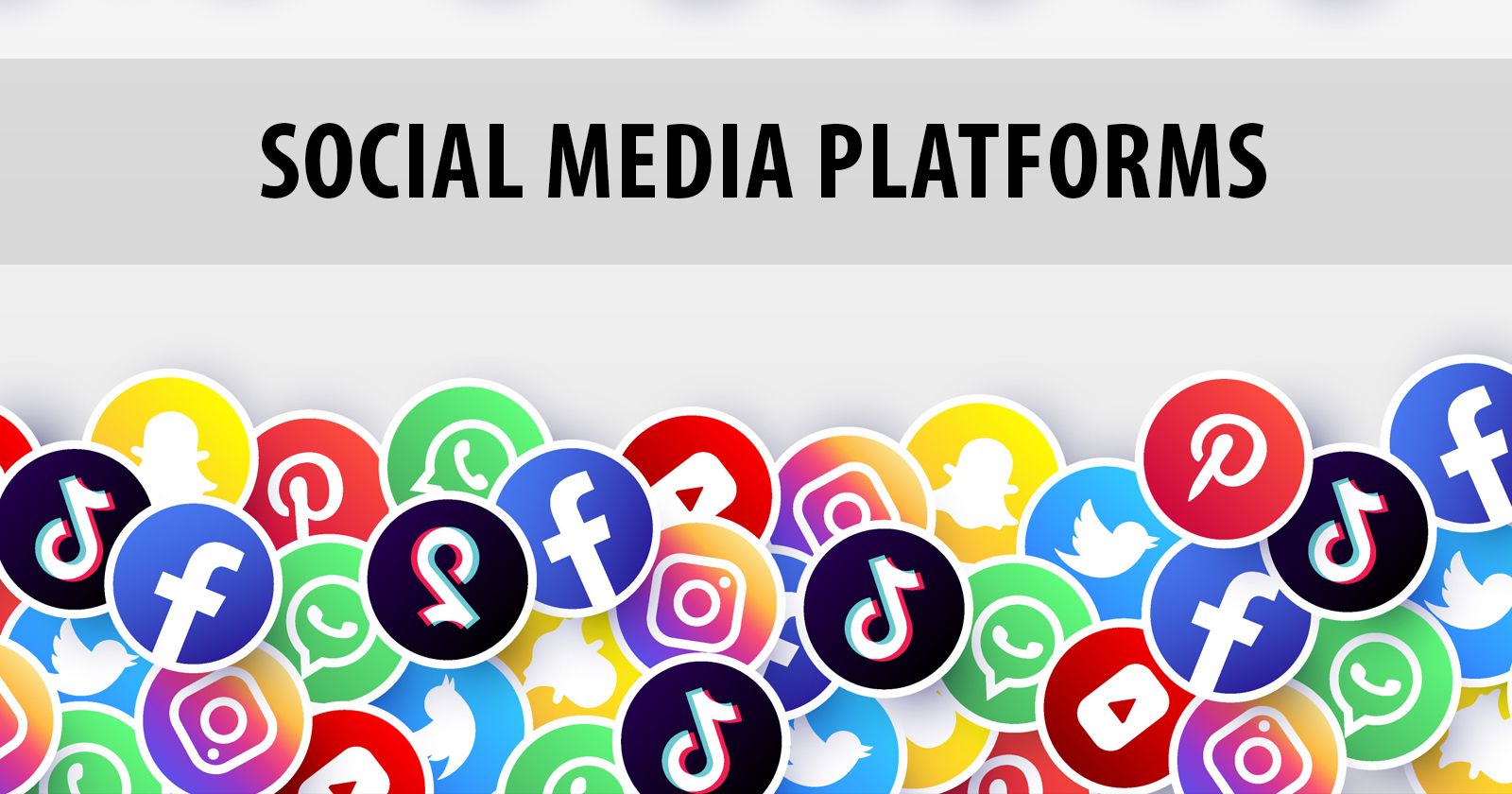
In an era defined by constant connectivity, social media platforms have transcended their initial purpose as mere communication tools. They have evolved into powerful, often insidious, architects of desire, subtly reshaping our purchasing habits and the very fabric of consumer culture. What begins as an innocent scroll, a casual ‘like,’ or a fleeting share, can now culminate in an impulse buy, a regrettable purchase, or a deeper entanglement in a cycle of consumption that impacts not just our wallets, but also our psychological well-being.
Despite years of intense scrutiny and extensive academic inquiry into the digital realm, humanity still grapples with a fundamental misunderstanding of social media’s profound influence. We frequently underestimate its power to steer our behaviors, especially when it comes to shopping. The narrative often centers on overt advertising, but the deeper, more complex story lies in the subtle psychological manipulations woven into the very design of these platforms, turning casual browsing into a conduit for commercial engagement.
This deep dive seeks to deconstruct the new psychology of social media shopping, moving beyond superficial observations to expose the underlying mechanisms that transform digital interactions into tangible transactions. We will unravel how our innate human tendencies, coupled with sophisticated algorithmic designs, create a powerful, often irresistible, impetus to buy. From the deceptive comfort of our self-perceptions to the insatiable drive of materialism, we will explore the intricate pathways from digital engagement to consumer action, revealing how platforms like Facebook and Instagram are quietly rewiring our brains for continuous consumption.

1. **The Introspection Illusion: Why We Misjudge Our Social Media Habits** For all the conversations and extensive research surrounding social media, a pervasive and often disturbing truth remains: we consistently misjudge our own habits and behaviors within these digital ecosystems. This phenomenon, termed the “introspection illusion” by Dunning et al. (2004), describes our tendency to believe we are fully in control of our actions, even when much of our behavior is automatic, habitual, and profoundly shaped by forces we barely register. We assume a level of awareness that, in reality, is frequently inaccurate.
This blind spot directly applies to how we perceive our engagement with social media. We scroll, we lurk, we like, and we share, often without conscious deliberation, sometimes even without fully processing the content. Research across numerous domains underscores this human fallibility; we routinely make inaccurate self-assessments, misjudging everything from our academic abilities (Chemers et al., 2001) and skill levels (Odean, 1998) to our susceptibility to health risks (Weinstein, 1980) and future emotional states (Wilson & Gilbert, 2003). On social media, this illusion blinds us to the subtle, yet powerful, nudges that guide our attention and, ultimately, our wallets.

2. **Materialism’s Grip: Shaping Attitudes Towards Social Media Content** The digital landscape amplifies a deeply ingrained human trait: materialism. Individuals with higher materialistic values frequently compare their own financial standing and possessions with those who appear to have more, often placing significant stock in what these ‘more affluent’ individuals say and display. This constant upward social comparison can foster feelings of inequality, injustice, frustration, and envy, driving a relentless pursuit of material acquisition as a means of perceived elevation.
This predisposition has a direct and measurable impact on how users engage with social media content. As Yoon (1995) identified, a positive correlation exists between materialism and general attitudes toward brand advertisements. The present study further supports this view, indicating that more materialistic people tend to hold more positive attitudes toward social media content (SMC). This suggests that materialism isn’t merely a fleeting preference but a permanent personal value, as posited by Richins and Dawson (1992) and Wang and Wallendorf (2006), deeply influencing how advertising and promotional messages are received in the digital space.

3. **The Materialistic Drive: Increased Social Media Usage Intensity** Building upon the foundation of materialism, the desire for material possessions and the comparative assessment of one’s lifestyle against others directly fuel increased social media engagement. Materialistic individuals are inherently more prone to engaging in social comparisons regarding their own and others’ standards of living. Social media platforms, by their very design, offer unparalleled access to precisely this kind of information, creating a fertile ground for these comparisons to flourish.
Platforms like Facebook and Instagram provide a continuous stream of updates from friends and acquaintances, showcasing their idealized lives, new purchases, and aspirational experiences. This constant exposure, particularly for those with high materialistic values, becomes a primary driver for increased social media usage, as users actively seek out and engage with content that feeds their comparative instincts. Haferkamp and Krämer (2011) observed that this access to information, facilitated by social media, directly contributes to higher social media intensity usage behaviors (SMI) among materialistic individuals, trapping them in a cycle of viewing and desiring.

4. **Social Comparison Theory: The Digital Mirror Reflecting Desire** At the heart of social media’s influence on consumption lies the fundamental human drive for social comparison, a theory articulated by Festinger (1954). Individuals possess an intrinsic desire to define their own beliefs and abilities by measuring themselves against others. This process can manifest as either upward comparisons, where individuals compare themselves to those perceived as “better” or more successful, or downward comparisons, with those perceived as “worse.” The digital realm, with its curated feeds and idealized presentations, predominantly fosters upward comparisons.
When users constantly encounter idealized images and carefully crafted narratives—whether from friends, influencers, or advertising—it triggers a powerful psychological effect. These upward comparisons often lead to negative self-assessments, creating a sense of inadequacy or a perceived deficit in one’s own life or possessions. As Lee et al. (2016) note, exposure to advertising messages, which are largely filled with unattainable ideals, directly exacerbates these negative comparisons, intensifying the need to acquire the products or services being advertised as a means to close this perceived gap.

5. **The Compulsion Loop: How Attitudes Towards SMC Fuel Unchecked Buying** The insidious link between social media engagement and problematic consumer behavior becomes starkly evident in the phenomenon of compulsive buying. This behavior, characterized by an uncontrollable urge to purchase, is significantly amplified by positive attitudes toward social media content (SMC). When users view social media content favorably, they become more susceptible to the persuasive cues embedded within it, leading to a higher propensity for compulsive purchases.
Furthermore, the relentless exposure to idealized imagery on social media can contribute to anxiety and lower self-esteem, especially for heavy users struggling with identity fragmentation. As Tutgun-Ünal (2020) highlighted, these negative psychological states can drive individuals toward compulsive buying in an attempt to alleviate distress or resolve identity inconsistencies. She et al. (2021) further solidified this understanding, revealing that online compulsive buying mediates the positive relationship between excessive social media use and financial anxiety, creating a self-reinforcing loop where digital engagement directly translates into financially risky behavior. This strong connection is also reflected in findings indicating that users with high materialistic scores are inherently more prone to compulsive buying.

6. **Conspicuous Consumption in the Digital Age: The Quest for Social Status** Social media has dramatically democratized and amplified conspicuous consumption, transforming it from an elite pursuit into a widespread digital performance. Conspicuous consumption, the act of purchasing and displaying goods to signal status or social position, finds fertile ground on platforms where users meticulously curate and showcase idealized versions of their lives. Trigg (2001) observed that a significant driver of conspicuous consumption is the emulation of social groups perceived to occupy a higher place in the social hierarchy, a dynamic perfectly replicated and intensified online.
Platforms like Facebook and Instagram have flourished precisely because they enable users to craft and present attentively curated profiles that reflect their idealized selves. These digital personas are intimately linked to the possessions and experiences prominently displayed, from luxury goods to exotic travel. Conspicuous consumption online thus serves as a symbolic representation of a prestigious position within a user’s social network, offering a psychological advantage during the consumption process. Khan and Dhar (2006) showed that high social media intensity (SMI) scores can enhance self-esteem, influencing individuals to purchase luxury goods online to elevate their perceived social standing, thereby giving rise to indulgent behavior and reinforcing the notion that material possessions communicate success. Furthermore, those with high materialistic values inherently tend to display more conspicuous buying behavior, viewing possessions as central to their identity and social communication.

7. **The Impulse Buy Phenomenon: When Instant Gratification Meets Online Engagement** The architecture of the online environment is masterfully designed to stimulate impulse buying, a phenomenon where purchases are made on the spur of the moment, without significant prior planning. E-commerce platforms, particularly when integrated with social media, excel at dismantling customer purchase restraints. They achieve this through highly engaging features, enhanced product stimuli, and even loyalty programs and chat rooms, all engineered to steer customers toward immediate, often unconsidered, purchases.
A significant driver of this impulsive behavior is the perception of customized social media advertisements. These ads, meticulously created by analyzing users’ online profiles, habits, and browsing histories, present content precisely matched to identified preferences and interests. When consumers are highly engaged with a media vehicle, such as a social media feed, they become demonstrably more responsive to brand advertisements, as Wang and Wallendorf (2006) revealed. This heightened engagement, coupled with the immediacy of digital shopping, makes impulse buying almost inevitable. Khuong and Tran (2015), along with Dodoo and Wu (2019), further found that consumers’ social media usage intensity is a strong predictor of indulging in impulse purchases. Moreover, highly materialistic individuals, driven by the positive sensation that purchasing provides, are shown to possess higher impulse buying tendencies, as articulated by Troisi et al. (2006), making them particularly susceptible to the instant gratification offered by social media commerce.

8. **The S-O-R Framework: Decoding Online Consumer Behavior**Beyond the individual psychological drivers, a deeper understanding of social media’s commercial pull requires examining the Stimulus-Organism-Response (S-O-R) framework. This traditional model, rigorously tested in various research domains, analyzes how external stimuli shape a customer’s internal states, ultimately influencing their intentions and actions. Initially introduced by Woodworth and later refined by Mehrabian and Russell, and further enhanced by Jacoby, the S-O-R model integrates human cognition and logical reasoning by adding the ‘organism’ element between stimulus and reaction.
In the context of social commerce, the S-O-R framework provides a robust theoretical lens for online buying behavior. Various forces, such as subtle social cues and targeted advertisements, act as “stimuli” (S). The “organism” (O) represents the customer’s internal cognitive and emotional states, including perceptions, attitudes, and, critically, their level of trust. This intricate interplay culminates in a “response” (R)—the customer’s online buying behavior.
Mapping these relationships offers profound insights into why consumers make purchasing decisions in the digital realm. This understanding is vital for developing effective, and ideally, more ethical strategies to enhance online shopping experiences. It also empowers consumers to consciously navigate these platforms, regaining control over their digital interactions and spending habits.

9. **Risk Factors in the Digital Bazaar: Navigating Financial, Time, and Psychological Uncertainties**
While social media streamlines online shopping, inherent risk factors significantly influence customer behavior within the S-O-R model. Consumers consistently evaluate potential financial risk, particularly when unable to physically inspect items. Fears of financial loss due to unmet expectations, poor quality, or credit card fraud significantly decrease online shopping behaviors. Mitigating such vulnerabilities through transparent refund policies and robust security measures is paramount for fostering trust.
Time risk presents another formidable challenge. Perceived uncertainty linked to e-shopping, combined with time needed for product research, transaction processing, and potential shipping delays, can deter buyers. “Unnecessary delays” often lead to customer unease, highlighting that while online buying offers convenience, unknowns around delivery and information access can result in lost time and frustration, impacting customer loyalty.
Perhaps the most insidious is psychological risk, defined by Jacoby and Kaplan as “the potential loss of self-respect brought on by the disappointment of failing to fulfill a purchase target.” In the digital sphere, the lack of sensory product evaluation exacerbates this uncertainty. The S-O-R model illustrates how these cumulative risk factors act as negative stimuli, disrupting a customer’s emotional balance and lowering confidence, ultimately decreasing online purchasing activity. Trust, in this context, serves as an indispensable mediator.

10. **The Pervasive Power of Social Media Advertising: From Engagement to Expenditure**In the contemporary digital landscape, social media has become a primary advertising medium, strategically guiding customer online shopping behavior. This shift emphasizes not just reach, but the precision with which platforms deliver promotional content. Research consistently shows a strong correlation among user happiness, perceived value, and perceived risk, all influencing a customer’s propensity to purchase online. As McClure and Seock noted, social media’s societal impact inherently persuades consumers towards specific products, profoundly shaping shopping habits, especially among younger demographics.
The efficacy of social media advertising lies in its ability to foster engagement and shape buying intentions. Platforms like YouTube, Twitter, Instagram, and TikTok offer distinct avenues: YouTube for entertainment, Twitter for relevant content via hashtags, Instagram for influencer collaborations (amplified during COVID-19), and TikTok for viral product dissemination. These platforms illustrate the diverse reach of digital marketing.
Within the S-O-R model, social media advertising acts as a potent stimulus, delivering engaging and relevant promotional material. This tailored content influences the “organism”—the customer’s internal states—by fostering emotional involvement, positive attitudes toward products, and increased brand awareness. Cultivating perceived value and trust through these appealing messages ultimately drives the “response,” manifesting as an increased propensity for purchases, underscoring advertising’s deep integration within social commerce.

11. **The Cornerstone of Confidence: Trust in the Social Commerce Ecosystem**In the intricate dynamics of online purchasing, trust emerges as an indispensable “organism” within the S-O-R framework, profoundly influencing customer buying behavior. E-commerce merchants must prioritize promotional strategies that build genuine trust to alleviate perceived risks and foster positive attitudes toward online shopping. Empirical research consistently confirms trust’s significant impact on market behavior, establishing a positive relationship with customers’ decisions to make online purchases.
Customer trust encompasses critical dimensions: reputation, reliability, trustworthiness, expectation fulfillment, and consistent delivery of promises. These elements collectively convey legitimacy, reassuring consumers about businesses in the digital sphere. When online transactions are underpinned by strong internal customer trust, purchasing decisions are facilitated and often succeed. Studies across various sectors highlight this direct influence, showing that a solid foundation of trust enhances engagement, positive word-of-mouth, and reputation, leading to increased buying behavior.
Crucially, trust also mediates relationships between various stimuli and online buying outcomes. Robust cybersecurity and reliable customer service can mitigate perceived financial risks, enhancing trust and purchase intentions. Similarly, social media trust in retailers can mediate its impact on purchasing intentions, transforming mere exposure into genuine intent. Acting as a positive stimulus, trust creates an atmosphere of security and confidence, encouraging more active online buying behavior and serving as a vital bridge between digital engagement and commercial transaction.

12. **The Avalanche of Acquisition: Understanding the Drivers of Overconsumption**The digital era, while revolutionizing global communication, has simultaneously fueled a pervasive culture of overconsumption, where individuals acquire goods and services far beyond their actual needs. This phenomenon carries profound implications, exerting insidious pressures on the economy, environment, and personal well-being. Overconsumption is intrinsically linked to societal materialism, often equating self-worth with accumulated possessions. As the Journal of Consumer Research notes, its impact cascades into environmental degradation, social inequalities, and widespread personal dissatisfaction.
The rise of social media platforms since the early 2000s has been inextricably linked to this shift in consumer behavior. With a substantial portion of the global population engaging with platforms like Facebook, Instagram, TikTok, and Twitter, these digital spaces have become integral shapers of opinions and trends. This ubiquitous presence provides an unprecedented canvas for the relentless dissemination of marketing messages and the propagation of consumer culture, turning casual browsing into a conduit for commercial desire.
Within this ecosystem, social media influencers wield considerable power. Through curated posts and aspirational narratives, they endorse products and lifestyles, generating desirability and urgency. This idealized portrayal compels many to aspire to similar consumption patterns; studies indicate influencer endorsements can elevate consumer willingness to buy by as much as 50%. Psychological underpinnings like FOMO and social proof further drive this, as observing others’ acquisitions creates an irresistible compulsion to conform or elevate status. The digital imperative of “keeping up with the influencers” now accelerates overconsumption.

13. **Viral Trends and Ecological Footprints: The Environmental Cost of Digital Desires**Targeted advertising further amplifies the propensity for overconsumption. Social media companies leverage vast datasets from user behavior to construct highly personalized ad campaigns. These bespoke advertisements, meticulously crafted to resonate deeply with individuals, significantly increase the likelihood of impulsive purchases. The scale of this digital advertising expenditure, projected to reach $420 billion by 2024, underscores the intense, data-driven effort to foster obsessive consumer engagement.
A vivid illustration of social media’s power to ignite rapid, widespread consumption lies in viral product trends. Examples like the fidget spinner or Squishmallow phenomena demonstrate how platforms like TikTok can transform niche items into global obsessions overnight. These trends generate massive, unsustainable demand, leading to supply chain disruptions and shortages. Such frenzied buying, encouraged by social media’s instant gratification culture, highlights the dangers of unchecked impulsive consumption.
The collective consequence of digital-fueled overconsumption is a severe environmental burden. The relentless cycle of overproduction and waste generation poses an existential threat. The United Nations warns that current consumption patterns would necessitate nearly three Earths by 2050. The fashion industry, heavily influenced by social media trends, contributes significantly, annually generating over 92 million tons of waste. This link between digital desire and tangible environmental degradation underscores the critical need for conscious online commerce.

14. **Mindful Consumption in a Material World: Strategies for a Sustainable Digital Future**In the face of pervasive overconsumption, a conscious pivot towards sustainable practices is essential. Individuals can begin by embracing mindful consumption, prioritizing quality, durability, and genuine need over sheer quantity and fleeting trends. Supporting demonstrably eco-friendly and ethically committed brands represents a crucial step. A Nielsen report reveals that approximately 90% of millennials are willing to alter purchasing habits to mitigate environmental impact, indicating a burgeoning demand for sustainable alternatives.
Brands, recognizing their immense influence, have a unique opportunity to lead this shift by leveraging social media to promote responsible consumption. Successful marketing campaigns that genuinely embed sustainability and community impact resonate powerfully with consumers scrutinizing the broader implications of their purchases. Research in the Journal of Business Research confirms that socially responsible marketing not only attracts but also significantly enhances brand loyalty, forging deeper connections beyond mere transactional exchanges.
The path forward demands a delicate yet determined balance between social media’s persuasive power and consumer behavior. It necessitates shared responsibility, where both consumers and brands actively engage in conscious practices. Consumers must cultivate awareness of their choices, while brands must move beyond unfettered consumerism towards championing a more responsible message. Initiatives like “No Buy Month” challenges are gaining traction, serving as tangible examples of how collective action can begin to reframe our relationship with material possessions for a more sustainable future.

15. **The Hidden Cost of Sharing: Digital Showcasing and Personal Well-being**What often appears as innocuous digital sharing—posting images of new clothes or the latest gadgets—harbors an insidious undercurrent, actively undermining both financial stability and mental well-being. Research links consumption-oriented social media engagement to heightened anxiety, diminished self-esteem, and increased excessive spending in some individuals. With approximately 40% of the global population on social media, understanding this profound influence, especially among young people, is critical for mitigating potential harm.
The core mechanism is social comparison. When young adults share product-centric content, it inadvertently triggers comparisons to the curated, idealized portrayals in their feeds. Platforms like Facebook and Instagram are saturated with images of perfect holidays and luxury goods, creating a glossy, aspirational facade. This constant exposure to unattainable ideals, as research with Singaporean university students revealed, profoundly hurts psychological well-being, manifesting as lowered self-esteem and elevated anxiety.
These feelings of inferiority can precipitate uncontrollable spending sprees, as individuals attempt to bridge the perceived gap between their reality and digital perfection. Of significant concern is the direct correlation between consumption-oriented sharing and risky financial behaviors, including rising credit card debt—a consequence not seen with general experience sharing. While negative impacts were prevalent among students valuing materialistic possessions, those reporting close, healthy parental relationships demonstrated greater resilience, suggesting strong familial bonds can buffer against these psychological and financial pitfalls.
The insidious nature of social media shopping, from psychological nudges to broader societal impacts, demands our urgent attention. As we navigate an increasingly digitized world, understanding these complex dynamics is paramount. It empowers consumers to make more informed choices, encourages brands to adopt ethical marketing practices, and ultimately, challenges us to redefine our relationship with consumption in the age of constant connectivity. The journey from ‘like’ to ‘buy’ is fraught with unseen mechanisms; only through critical awareness can we truly regain control over our digital desires and foster a more sustainable, well-adjusted future.


:max_bytes(150000):strip_icc()/InStyle-November-Kristen-Stewart-Lead-Social-3-2000-3df0d52122904eaca75fab6c226a38b9.jpg)
